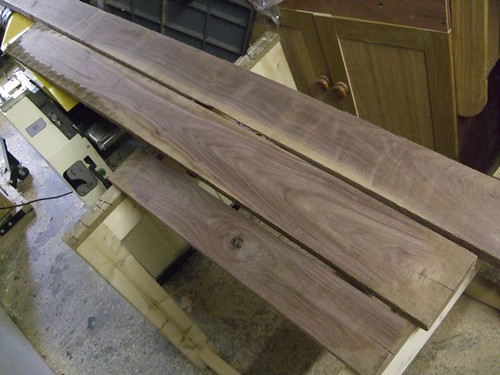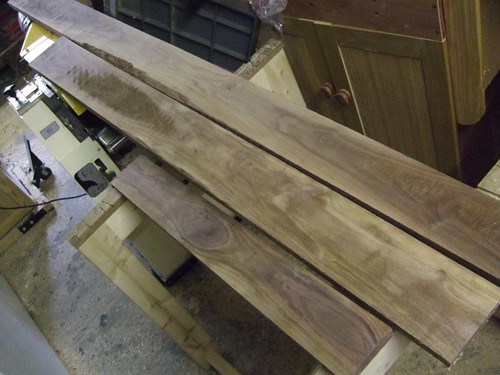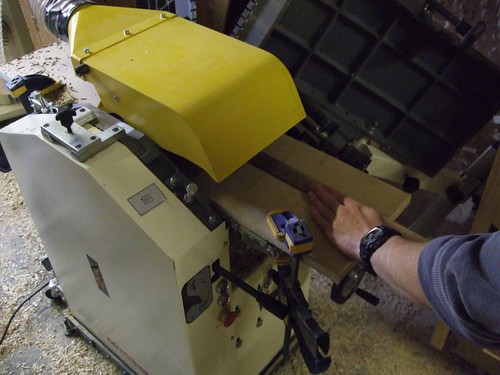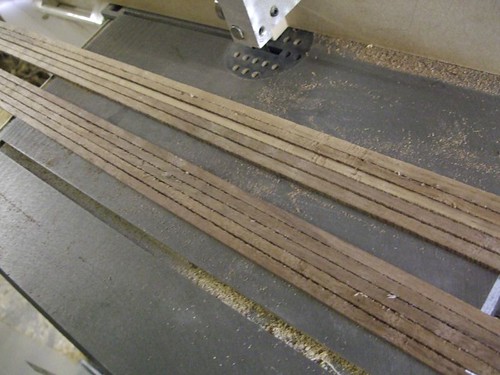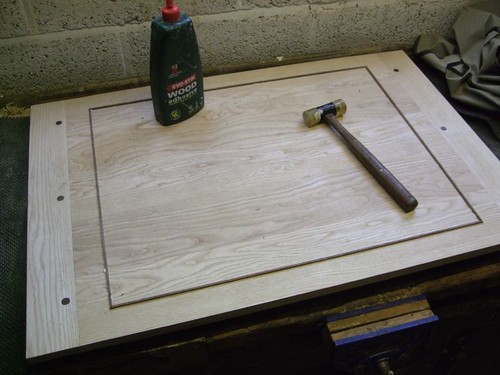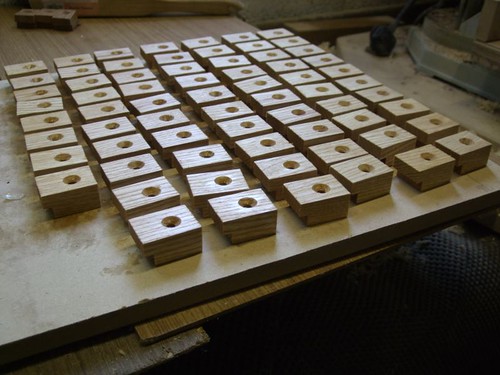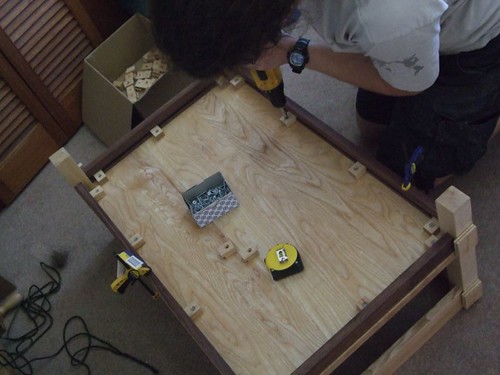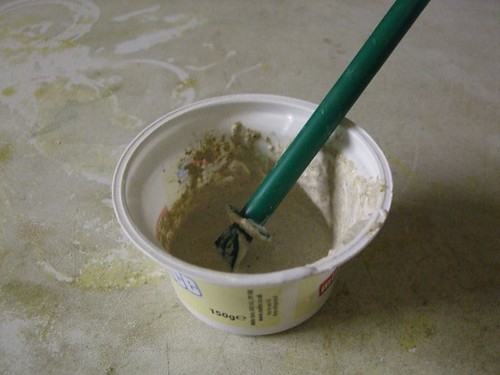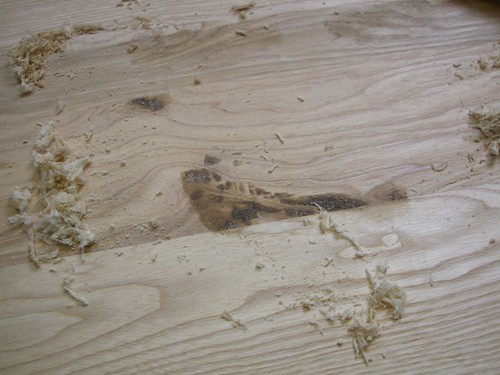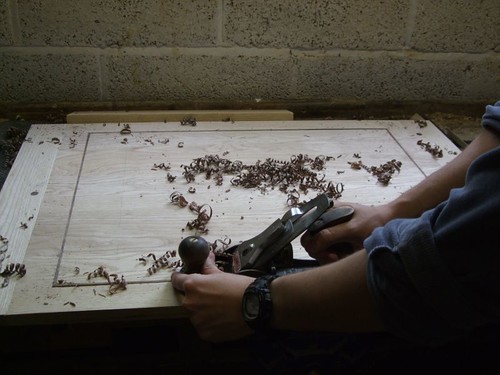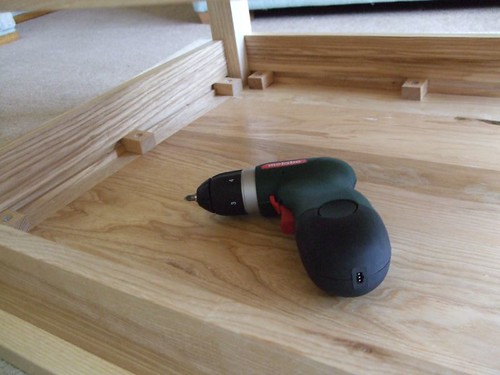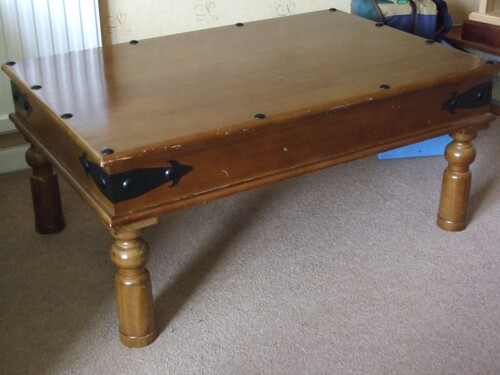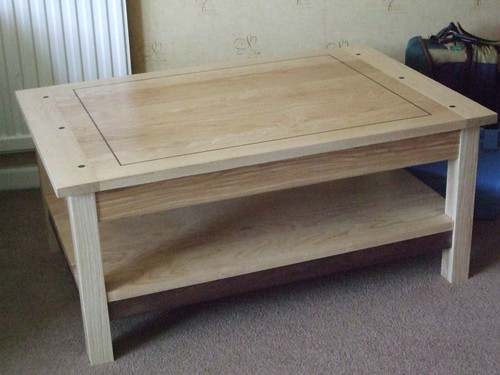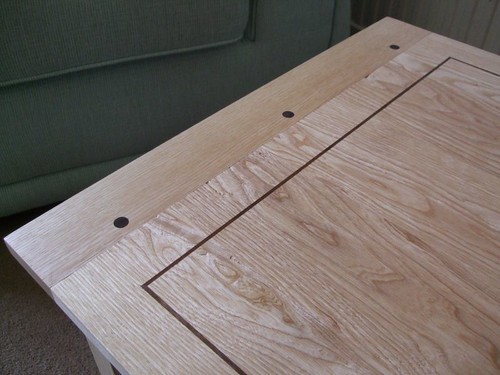About time for an update, I think!

Went back to Interesting Timbers yesterday and exchanged the walnut for some 1 1/2" stuff as they didn't have any 1". David Simmonds was again more than helpful and he even allowed me to scrape away at the surface with my block plane. :wink:
With some decent walnut amongst my stock, I began working on the inlay material. I started by ripping off a 2" width, which would incidentally remove a slight waney-edge at the same time. After preparing a face and edge on the planer, I ripped off about 8mm on the bandsaw and then repeated the process so I had some spare. When it came to thicknessing, I used the MDF "false bed" trick, held in place with a couple of cramps (I couldn't be bothered to try and find my drill and all that...!)
With a bit of care then, I was able to plane this stuff down to a size that would fit snuggly in the pre-cut grooves. Then I took the 1 1/2" wide strips and ran them through the bandsaw to give me plenty of 6mm wide strips (5mm would've been plenty but the guides on my bandsaw were interfering with the fence :roll

.
You can see in this photo's how there is still quite a variation in this new lump of walnut. Then again, I did choose to rip off a section from outer edge of the board, where the sapwood was
going to be...

:wink: Forutunately, I cut plenty of spare. I still ran both lengths of walnut through the thicknesser just to be sure - and they both look fine for future use.

If I attempt something like this again, I'll look for a different approach to mitring the ends of the inlay stringing. I honestly thought any saw I have would be too coarse to cut through this, but that didn't mean that doing it with a chisel was necessarily a better solution... Anyway, what's done is done now, I'll have a look at it again tomorrow! :?

Until I got my hands on some more walnut, I wasn't really able to do much else on this except to keep working on removing the tearout from the top and, it is going quite well with the scraper. I did give my army of buttons a coat of Danish Oil so I could at least fix the shelf...
And I even had a go at mixing up some filler (sawdust and PVA) to see how it might fill any outstanding 'scars' left by the tearout.
I'm glad I only tried this on the underside, where it won't be seen, as some of it went horribly dark once the glue had dried. Even after scraping, this is how it looks. At least I didn't touch the top surface, eh! :wink:
I also noticed the main panel has shrunk already, leaving the breadboards exposed by about 1mm. I'll try and leave it for a few days longer while the sun's out like this, in hope of minimising any further issues of shrinkage once it's indoors.
Nearly there then! But I think this is one project I'll be sorry to see completed, if you know what I mean.






